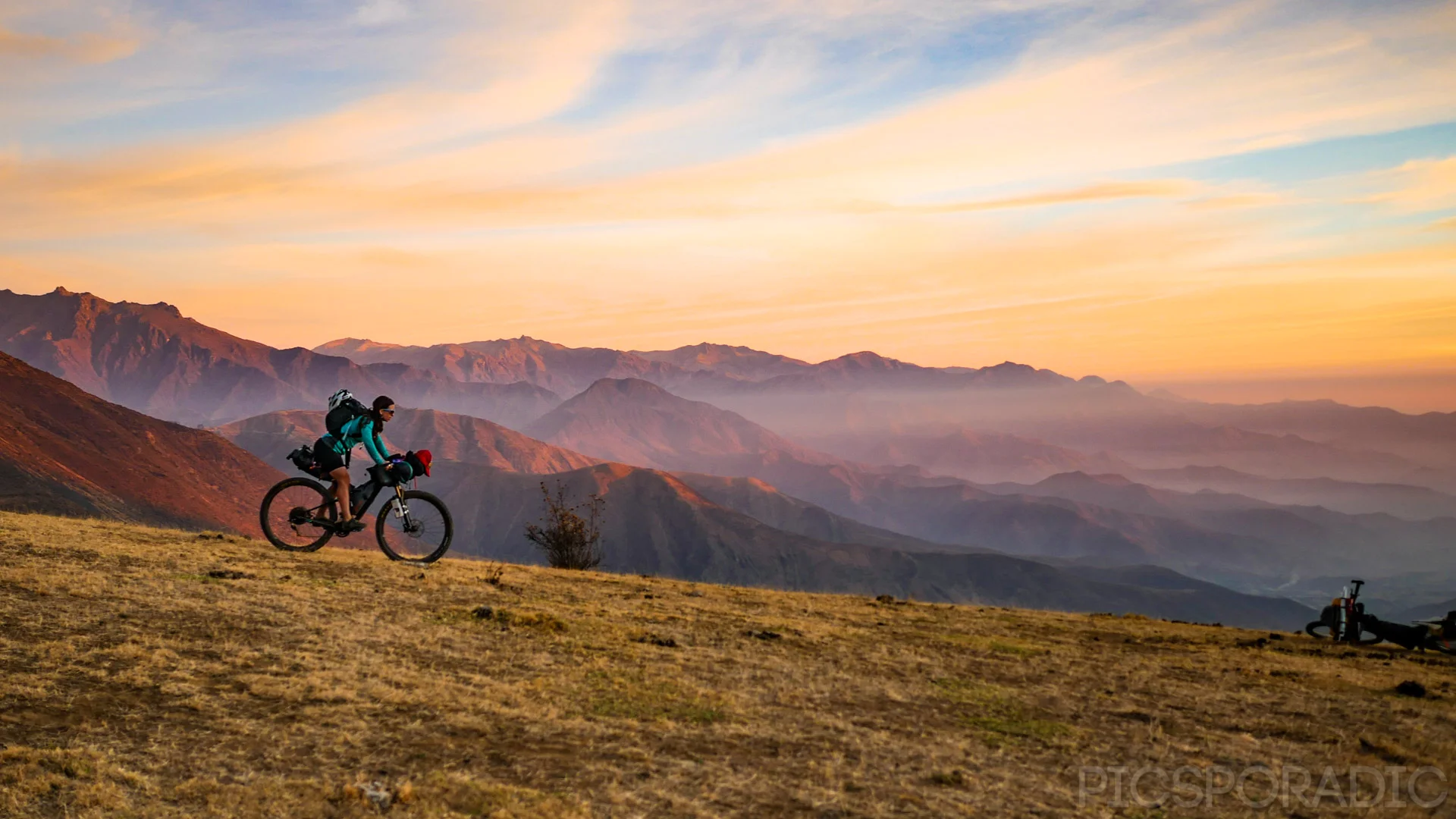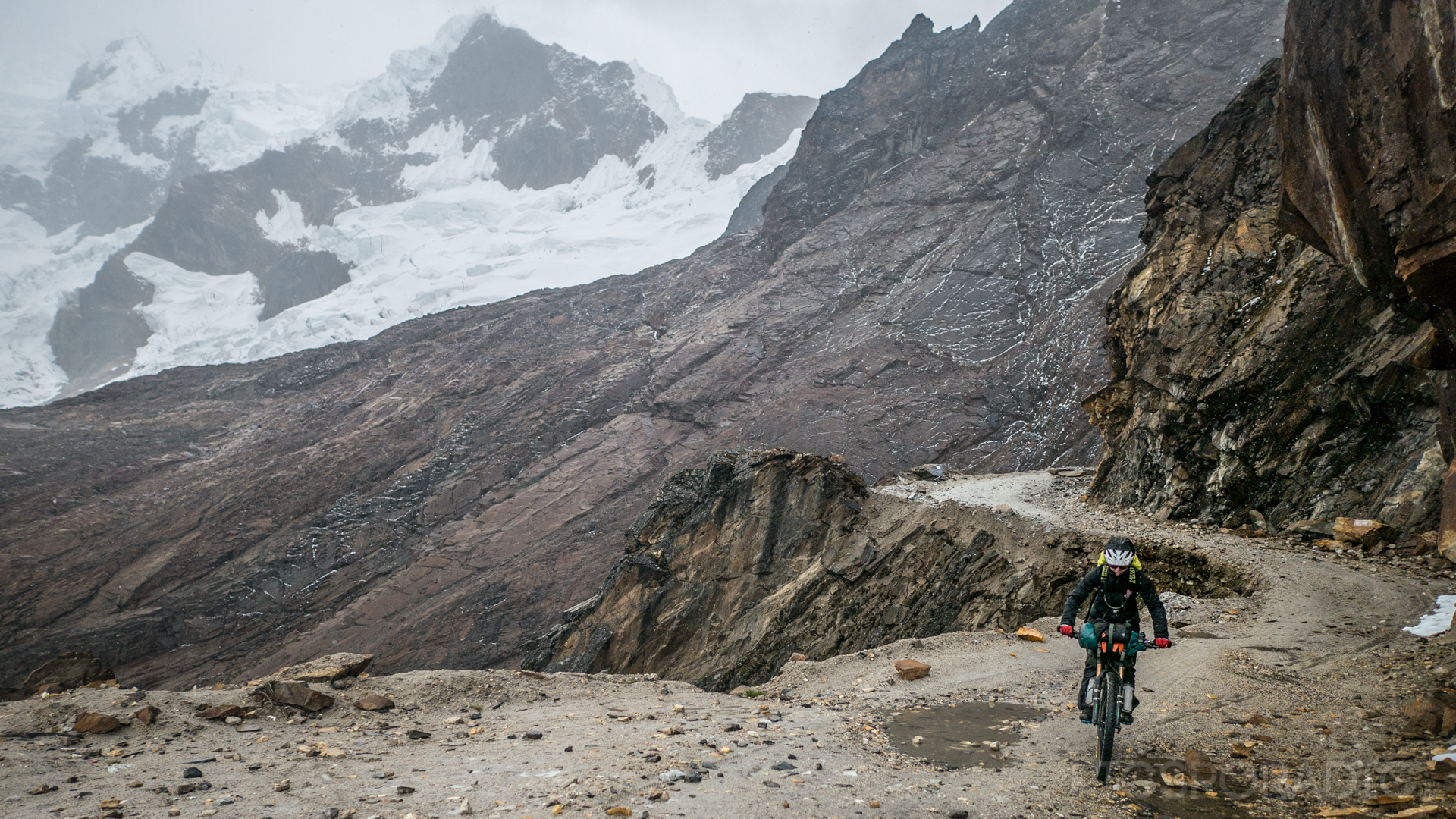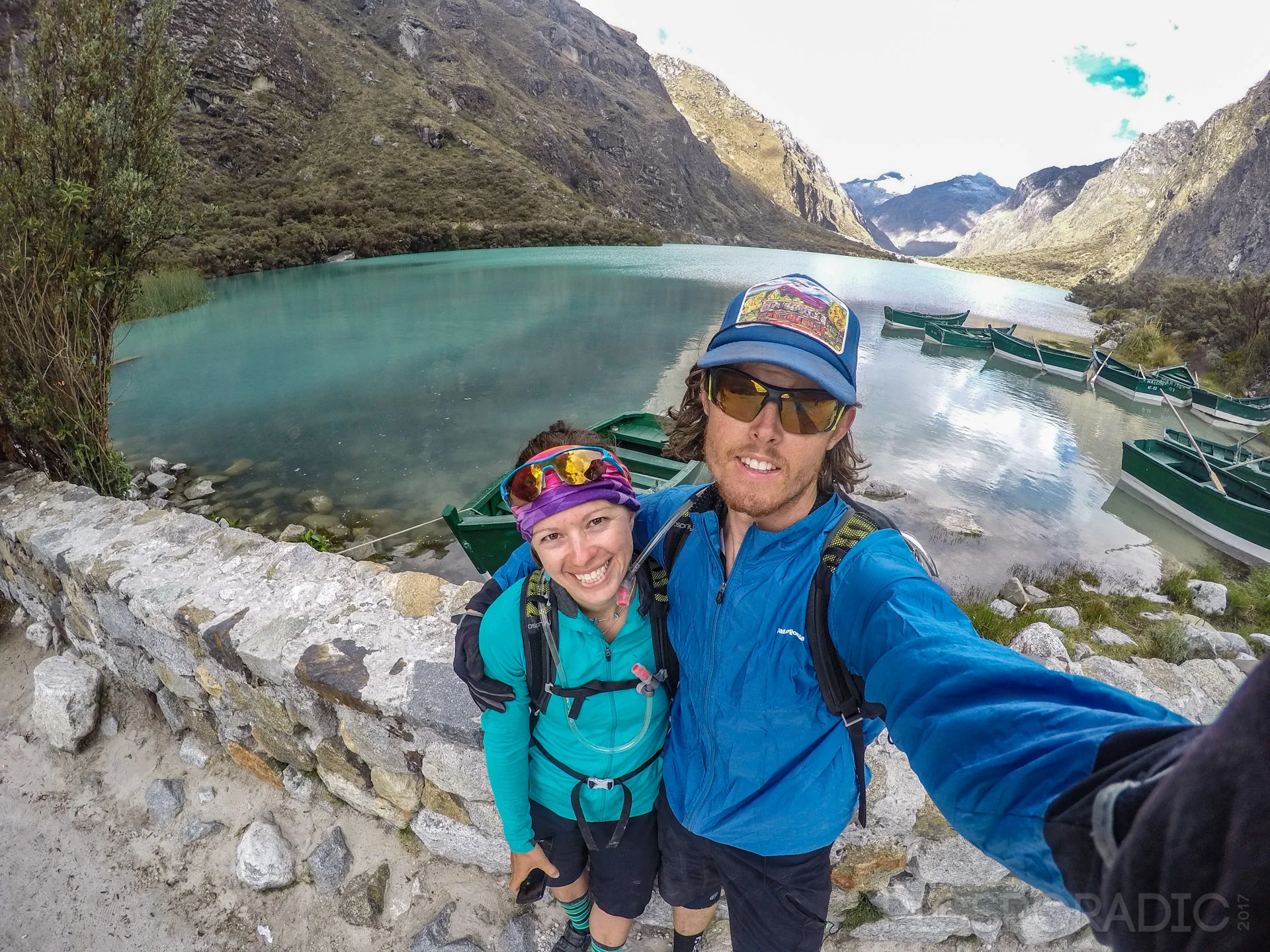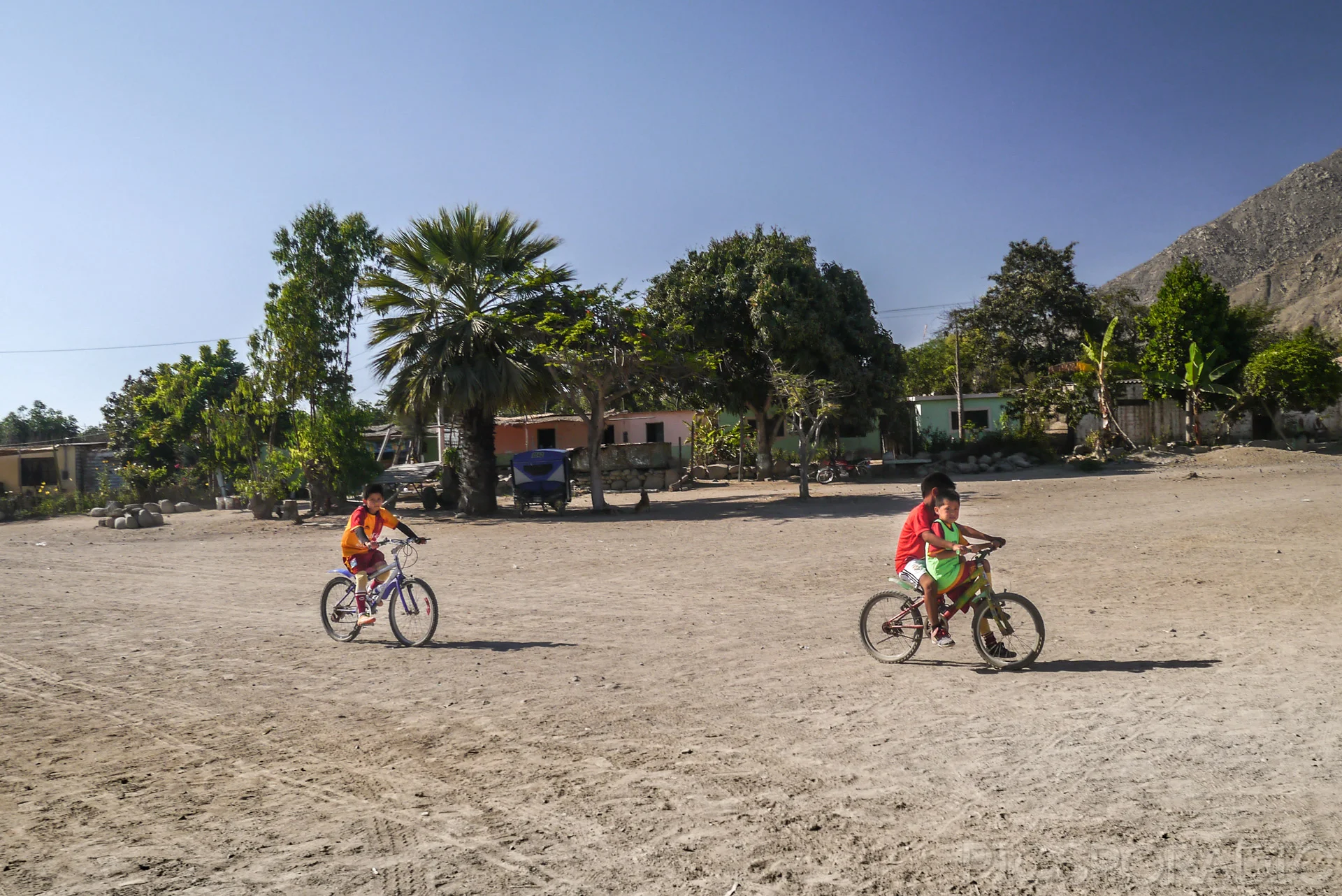I am obsessed with big mountains.
I want to be in them, on them, among them, moving through them. So when my friend, fellow adventurer and professional photographer Brendan James suggested Peru as a destination for a bikepacking expedition, I promptly invited myself along.
We decided that we would spend nearly two months in this huge country, but concentrate only on the Andes mountains: both the Cordillera Negra and the Cordillera Blanca. The Cordillera Blanca is the 2nd highest mountain range in the world, bested only by the Himalayas.
We would ride from the coast north of Lima, through the desert up the arid Cordillera Negra range, where it would prove very difficult to find any water sources. We would descend the Negra down into the Ancash Valley towards the town of Caraz, regroup and plot the next section of our route. This would take us up into the glacial Cordillera Blanca range, home to giant peaks like Huascaran and Huandoy. We would then make our way over the Cordillera Blanca to the Amazonian Yanama District, and explore the lush and rainy Eastern side of the Blanca range. Back over the Blanca we would then go, and land finally in Huaraz, where we would end our expedition.
But we didn't want to just blast through the Andes in a blur, hoping we would somehow soak in its grandeur as we flew by. Instead of pedaling right through with no time to experience the areas we were in, we would set base camps in areas where we wanted to go deeper and explore more: both on foot, trail running and hiking, and on our mountain bikes. We would strip our bikepacking rigs of their loads and using them as mountain bikes, light and capable of riding technical singletrack only used by foot travelers and Incan ranchers. We chose full-suspension mountain bikes for this purpose, as they could be locked out for road riding and put into squish mode for trail exploring.
I was riding the Scott Spark 900 for this adventure, loaned to me from Pedal Pushers Cyclery in Golden, Colorado, with 120mm of travel both front and rear. I outfitted it with a robust IndustryNine steel Enduro wheelset and bikepacking bags from Defiant Pack, handmade in Carbondale, Colorado. It turned out to be the perfect adventure rig for this little outing. Light and high-performance enough to shred the steep and technical trails, and robust enough to handle my heavy load: 40+ pounds of gear, mostly in the form of winter clothing to keep me functional over 16,000ft mountain passes. I drank Skratch Labs to keep me hydrated for my big days in the mountains both on the bike and on foot, and I was outfitted with robust Gore Bike Wear outerwear to guard against hypothermia as we passed into Peru's rainy season in the Cordillera Blanca.
We planned our route as we went: examining Google Earth one section at a time, searching for tiny lines through the peaks and valleys that could possibly be a passable trail or tiny road. Then we just went for it, talking to locals and revising our route along the way. We stayed off the main roads as much as possible, taking remote backroads, doubletracks, and singletrack trails through untouched valleys and over mountain passes seen only by the wild Incan horsemen and women as they traveled from one alpine meadow to the next in search of their roaming cattle.
We ended up riding for 40 days, with more days spent exploring in between. I spent much of this expedition with my eyes and mouth wide open, in awe of this magnificent landscape. Most of it was untouched. The biggest shock was literally seeing the glaciers melting and receding right in front of our eyes. We spent four days in the Paron Valley, at a base camp where we hiked and ran under iconic peaks such as Artesonraju and Chakraraju, the famous "Paramount Peak" seen in the movies as the Paramount Pictures logo.
Over those four days, we watched the melting glaciers literally change the shape of the Paron Valley as the braided rivers swelled, creating new cascades that ate away the banks in huge chunks and carried the earth out to the brilliantly turquoise Laguna Paron. Brendan and I barely said two words to each other over those four days as we moved through this landscape, surrounded by 23,000+ foot peaks losing snow and ice as rapidly as we stood there breathing in the sparse air. It was all too overwhelmingly beautiful and sad at the same time.
Peru is an incredible -- literally unbelievable -- country. The Andes are too big to comprehend, even when you are standing right in them, up at 17,000 feet with the high peaks still towering above you. I have never felt so tiny and powerless in my entire life. The Peruvian people, including the Incans tucked away in remote tiny villages who didn't speak a word of Spanish, were quiet and reserved, but also incredibly warm and kind, always willing to lend a helping hand or give advice on the route.
It was truly a privilege to move through those mountains, especially in a way that was so uncommonly traveled, off the main track, and pieced together from tiny lines on a satellite map combined with a lot of pointing and talking to locals. "Ud. conoce la linea negra arriba en la montana? Es una sendera? Y cree podemos pasar con bici?" we would ask someone we met on the road or in a village. (Are you familiar with the black line on the mountain? Is it a trail? And do you think we can pass with bicycles?")
Sometimes they would respond in the affirmative. Sometimes with a definite "no way." Other times they would shrug and look off into the distance: "No conozco la linea, pero yo creo es muy, muy duro..." (I don't know the line, but I think it is very, very difficult.") And we would nod, and say "Si, claro. Entonces... vamos a ver." (Yes, of course. Well then... let's go and see.")
Sometimes it would work out, and "la linea negra" would be a passable trail. Other times, it involved a lot of rock scrambling over exposure while shouldering our bikes and gear. Still other times, we were forced to backtrack and find a different route.
Y siempre, por supuesto, el viaje es un gran aventura.











































































































